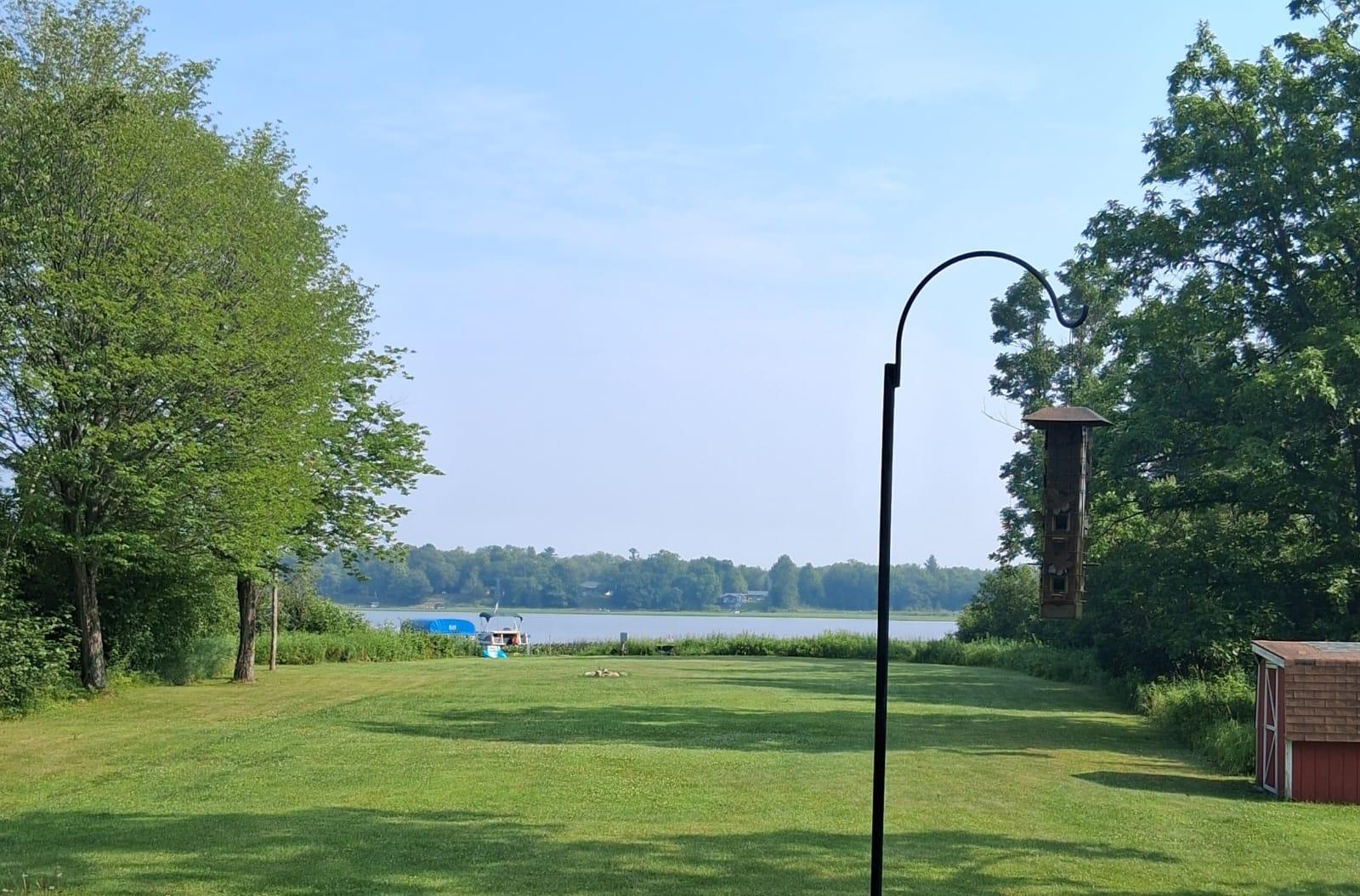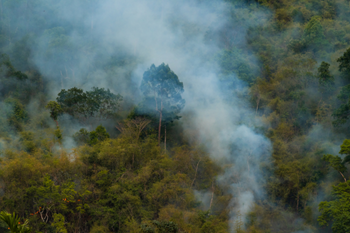by Anne van Oorschot, AWC The Hague
When my Dad was in grade school, his parents built a cabin on a beautiful lake in northern Minnesota. Far from “civilization,” with an abundance of towering pine trees, birds, fish and animals such as deer, raccoons and squirrels galore, it was a little piece of tranquil paradise. My Grandma, who suffered from hay fever, found relief in the clean, fresh air, and my Dad romped and played in, on and around the lake, finding three boys his own age to share in his adventures. My Dad bought the cabin from his Mom when I was in grade school, and my brothers and I spent our summers much as my Dad had, romping in, on and around the lake with the other 10 kids of his original three friends. Paradise indeed!
 Fast forward to 2025: My 2 brothers and I all have cabins on the lake, and the three cabins of my Dad’s childhood friends are still in the original families, with three more added to the list. When my kids were growing up in the Netherlands, their favorite vacations were our trips “to the lake” where the gang from their age group numbered 27! That group, many of whom still come for a few weeks in the summers, has 43 kids to date, and our grandkids – the fifth generation – love coming to this north woods paradise just like previous generations did! Sounds pretty idyllic, right? What could go wrong? Canadian wild fires.
Fast forward to 2025: My 2 brothers and I all have cabins on the lake, and the three cabins of my Dad’s childhood friends are still in the original families, with three more added to the list. When my kids were growing up in the Netherlands, their favorite vacations were our trips “to the lake” where the gang from their age group numbered 27! That group, many of whom still come for a few weeks in the summers, has 43 kids to date, and our grandkids – the fifth generation – love coming to this north woods paradise just like previous generations did! Sounds pretty idyllic, right? What could go wrong? Canadian wild fires.
From May to August 2025, wildfires ravaged large areas of Canada’s vast forests, sending frequent plumes of unhealthy smoke deep into the United States. Unlike the activity during the horrific wildfire season of 2023 – when fire activity was focused in the west (Alberta) and east (Quebec) – the 2025 fires plagued the central provinces. The Canadian wildfire season began in mid-May with over 160 wildfires across the country, primarily in the provinces of Manitoba, Saskatchewan and Ontario. Since Minnesota borders Canada in the middle of the US, and our cabin is in the northern part of the state, we experienced frequent bouts of poor air quality.
Why are the Canadian wildfires bad this year?
Wildfires are a natural part of the boreal forest and they depend on the availability and density of dry fuels, as well as a source of ignition to start the fire. In forested and grassland ecosystems, the buildup of fuels such as dried grasses, shrubs, leaf litter and fallen branches provides the materials necessary for fires to ignite and spread. The continuity of these fuels determines how easily a fire can move through an area, and their density determines the intensity of the fire and the heat release of the flames. Ignition sources can be natural, such as lightning, or human caused, such as campfires, discarded cigarettes or powerline sparks. While the occurrence of wildfires is natural, climate change, driven by fossil fuel consumption has led to higher temperatures, drier conditions and longer fire seasons.
According to a June 5 article in Yale Climate Connections, there were 202 active wildfires burning in Canada, with 109 of them considered to be “out of control.” The fires had burned 6.4 million acres, killed two people and forced over 26,900 to evacuate. In Saskatchewan, a very dry and windy air mass had settled, causing massive wildfires to run across the province. Entire communities were devastated and at one point, HALF of the province was without communications or internet due to infrastructure damage.
A long summer of wildfire smoke in North America With vast fires burning in Canada, the first “smoke event” for the US occurred between May 30 and June 4, and portions of nine states – Minnesota, North Dakota, Wisconsin, South Dakota, Michigan, Nebraska, Iowa, Indiana and Montana – were affected. The wildfire smoke brought elevated levels of fine particle pollution (PM 2.5 = particles less than 2.5 microns in diameter) in excess of the 24-hour EPA standard of 35 micrograms per cubic meter. This corresponded to an air quality index, or AQI, above 100 – in the “Unhealthy for Sensitive Groups,” code-orange range. Portions of five states experienced 24-hour levels of PM 2.5 in the “Unhealthy” red range. At this level, everyone may begin to experience health effects, while those with respiratory problems plus other sensitive groups can experience more serious health effects. At one point during June, Minneapolis – Minnesota’s largest city – ranked #2 on a list of the worst air quality among major cities worldwide! Smoke was an ongoing health hazard across North America for the remainder of the summer. Carried by a strong jet stream, smoke from these Canadian fires even traveled across the Atlantic Ocean to Europe in both mid-June and early August!
With vast fires burning in Canada, the first “smoke event” for the US occurred between May 30 and June 4, and portions of nine states – Minnesota, North Dakota, Wisconsin, South Dakota, Michigan, Nebraska, Iowa, Indiana and Montana – were affected. The wildfire smoke brought elevated levels of fine particle pollution (PM 2.5 = particles less than 2.5 microns in diameter) in excess of the 24-hour EPA standard of 35 micrograms per cubic meter. This corresponded to an air quality index, or AQI, above 100 – in the “Unhealthy for Sensitive Groups,” code-orange range. Portions of five states experienced 24-hour levels of PM 2.5 in the “Unhealthy” red range. At this level, everyone may begin to experience health effects, while those with respiratory problems plus other sensitive groups can experience more serious health effects. At one point during June, Minneapolis – Minnesota’s largest city – ranked #2 on a list of the worst air quality among major cities worldwide! Smoke was an ongoing health hazard across North America for the remainder of the summer. Carried by a strong jet stream, smoke from these Canadian fires even traveled across the Atlantic Ocean to Europe in both mid-June and early August!
Polluting smoke in paradise
What effect does this have on my family’s cabin in northern Minnesota? There is the obvious visual answer: sometimes hazy skies that the sun cannot break through. The more serious problem is felt by anyone in the area who has respiratory problems, like my childhood friend Karen. She and her husband retired to the cabin a number of years ago and have a beautiful spot on the lake, complete with a pontoon boat to enjoy time on the lake. But this past summer, due to continuous poor air quality caused by wildfire smoke, she could hardly do any activities outside. Going out on the pontoon was impossible, as was almost any outdoor activity, such as the annual potluck on our front lawn for our entire community. While no one else in the group is as seriously affected as Karen, it’s NOT good for any of us to be breathing polluted air in!
Conclusion?
This is, of course, just one example of the adverse effects of wildfires. There have been widespread fires in, for example Spain, France, Greece and Australia doing tremendous damage. These wildfires can’t be “fixed!” The only solution is renewed efforts to curb climate change.
Sources:
Widespread Smoke from Canadian Fires | Earth Observatory
2025 Canadian wildfires | Wikipedia
Expect a long summer of wildfire smoke for North America | Yale Climate Connections
Photo credits:
Photo 1: Canva
Photo 2: author

